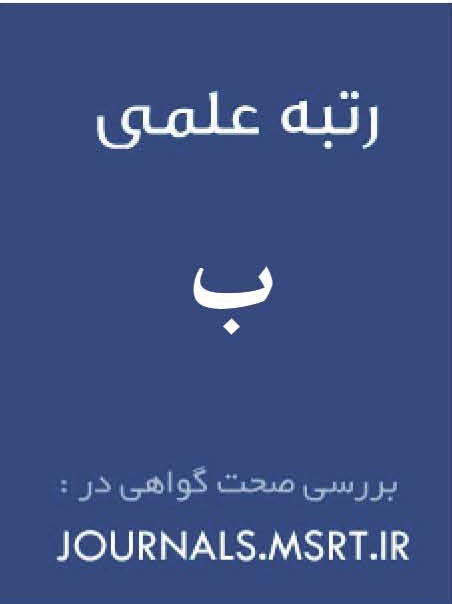Explaining an Investment Strategy Model in Alignment with the Business Cycle and Corporate Life Cycle Using a Mixed-Methods Approach
Keywords:
Competitive advantage, investment strategy, business cycle, organizational life cycle, mixed methodAbstract
Investments in productive assets intended for the modernization and expansion of production processes—and in response to market demand—are influenced by a range of internal and external organizational parameters, which together shape the investment strategy model. Considering the critical role that investment plays in profitability and the attainment of financial competitive advantage within businesses, this study aims to identify the factors influencing investment and to develop a model for investment strategy. The firms within the study’s scope are divided into two categories: chemical companies and food & beverage companies, with the results of the model implementation analyzed and compared across these two groups. In order to ensure compatibility of the model with environmental fluctuations and internal organizational changes, the variables of the business cycle and the corporate life cycle are incorporated into the model. The research methodology follows a mixed-methods approach comprising both qualitative and quantitative phases. The study's findings, covering the period from 2016 to 2023, reveal that the declining trend in the value of fixed assets indicates equipment obsolescence and a critical need for investment—particularly in the chemical sector, which relies heavily on imported advanced technologies. However, under current sanctions, such investment is unfeasible. Moreover, due to the presence of ownership entities and existing conflicts of interest in this profitable industry, excess investment is observed, which—based on the findings—is ineffective and lacks the necessary efficiency. In the food industry group, regulated pricing policies have led to reduced profitability and financial constraints, thereby preventing the sector from making the necessary levels of investment despite its strategic importance.
Downloads
References
Abbasi, E., & Abvaali, M. (2020). Financial Theories. Alzahra University. https://doi.org/10.37403/financial.v6i2.146
Adeli, O. A., & Mamazizi, K. (2017). Investigating the effect of bank interest rate and its instability on private sector investment in Iran. Economic Strategy, 6(22), 5-36.
Amjadian, Y., & Borhani, S. A. (2025). The effect of deviation from resource allocation strategies in the industry on investment inefficiency considering the moderating role of corporate governance, product market competition, and information asymmetry. Financial Engineering and Securities Management Quarterly, 16(63), 1-25.
Arab Salehi, M., Ghoogardchian, A., & Hashemi, M. (2014). Factors affecting investment decisions in capital assets of companies listed on the Tehran Stock Exchange. Financial Accounting, 6(33), 67-85.
Azam, M., & Shah, S. A. (2011). Internal Financial Constraints, External Financial Constraints and Investment Choice: Evidence from Pakistani Firms. Australian Journal of Business and Management Research, 1(8), 18-22. https://doi.org/10.52283/NSWRCA.AJBMR.20110108A02
Baradaran Hassanzadeh, R., & Taghizadeh Khaneqah, V. (2016). The effect of agency costs on investment behavior. Financial Accounting and Auditing Research, 8(32), 132-163.
Ben, C., Kimura, Y., Kwan, A., & Tan, E. (2024). Capital Budgeting, uncertainty, and misallocation. Journal of Financial Economics. https://doi.org/10.1016/j.jfineco.2024.103779
Carletta, J. (1996). Assessing agreement on classification tasks: The kappa Statistics. Computational Linguistics, 22(2), 249-254.
Creswell, J. W., & Clark, V. P. (2021). Mixed Methods Research. Aiizh.
Dastgir, M., & Ghanizadeh, B. (2014). The impact of earnings quality on tangible fixed assets and long-term investments. Financial Accounting and Auditing Research, 6(23), 75-97.
Hashemi, S. A., & Mashayekhi, S. A. (2018). The effect of corporate governance mechanisms on the relationship between investor sentiment and companies' investment decisions. Empirical Accounting Research, 7(27), 199-225.
Karimi, F., & Sadeghi, M. (2009). Internal and external financial constraints and their relationship with investment in capital assets in companies listed on the Tehran Stock Exchange. Financial Accounting, 1(4), 43-58.
Keynes, J. M. (1937). The general theory of employment. The Quarterly Journal of Economics, 51(12), 209-223. https://doi.org/10.2307/1882087
Khodadad Kashi, F. (2011). Macroeconomics (Vol. 1). Payame Noor University Press.
Maqsoudi Shourabi, M., Zaranjad, M., & Khodapanah, M. (2023). Evaluating the effects of marginal efficiency of investment shocks on macroeconomic variables: A Bayesian dynamic stochastic general equilibrium model. Journal of Development and Capital, 16, 51-64.
Pejuyan, J., & Khosravi, T. (2012). The impact of inflation on private sector investment. Investment Knowledge, 1(4), 1-17.
Rahmani, T. (2006). Macroeconomics (Vol. 2). Baradaran Publishing.
Saadatmehr, M. (2011). Investigating the effect of security on private investment in Iran. Economic Growth and Development Research, 1(2), 164-187.
Safaeyan Rizi, M., & Sadeghi, M. (2009). Evaluating investment decisions and their relationship with earnings sustainability: A case study of companies listed on the Tehran Stock Exchange. Financial Accounting, 1(3), 69-87.
Salehi, A., Elahi Sahar, M., & Savari, A. (2016). Investigating investment decisions of financially distressed companies. Financial Management Perspective, 16, 31-49.
Shamsdoust, F., Mahmoudi Khoshrou, O., Mohammadi Malgerni, A., & Sheikh-Ahmadi, A. (2024). Modeling fixed asset investment with the role of regulatory indicators and artificial intelligence approach. Financial and Investment Advances, 5(3), 26-64.
Sotoudeh Kia, H., Abbasi, R., & Basirat, M. (2017). Investigating the nonlinear relationship between working capital management and performance and investment in companies listed on the Tehran Stock Exchange. Asset Management and Financing, 5(4), 51-68.
Downloads
Published
Submitted
Revised
Accepted
Issue
Section
License
Copyright (c) 1404 Azadeh Fakuri, Ebrahim Chirani, Seyyed Mozaffar Mirberg Kar (Author)

This work is licensed under a Creative Commons Attribution-NonCommercial 4.0 International License.









